Find the Perfect Fit—Explore Free Decodable Samples
Get instant access to free Developing Decoders samples—written by educators and grounded in the Science of Reading. Explore engaging fiction and nonfiction titles, each thoughtfully designed to align with your phonics scope and sequence.
Browse the collections—use the icons below to explore what’s inside each one
Green Fiction Collection
220 Fiction Decodable Books and One Anthology of 28 Passages Written to Align with UFLI's K-2 Scope and Sequence
Empower young readers with the Green Fiction Collection—engaging decodable fiction designed to build foundational reading skills. These stories bridge explicit phonics instruction and independent reading, helping students apply what they’ve learned while gaining confidence. Ideal for small groups, intervention, or classroom libraries.
Collection Overview
This collection includes 220 unique book titles and one anthology with 28 passages. Purchasing options include:
•Kindergarten: 90 book titles (6 copies each) + anthology (12 copies)
•First Grade: 182 titles (6 copies each)
•Second Grade: 170 titles (6 copies each)
•Complete Collection: 1,320 books (6 copies per title) + anthology (12 copies)
•Single-Title Option Available: 1 copy of each book and 1 copy of the anthology
*Titles in this collection can be found on the UFLI Decodable Text Guide.
Green Nonfiction Collection
195 Nonfiction Decodable Books Written to Align with UFLI's K-2 Scope and Sequence
Enhance phonics lessons with the Green Nonfiction Collection—engaging decodable texts that build background knowledge and reinforce phonics skills. These nonfiction titles support foundational reading while boosting confidence and sparking curiosity through real-world topics. Ideal for small groups, intervention, or classroom libraries.
Collection Overview
This collection includes 195 unique nonfiction titles. Purchasing options include:
•Kindergarten: 50 titles (6 copies each)
•First Grade: 75 titles (6 copies each)
•Second Grade: 70 titles (6 copies each)
•Complete Collection: 1,170 books (6 copies per title)
•Single-Title Option Available: 1 copy of each book
*Titles in this collection can be found on the UFLI Decodable Text Guide.
Orange Collection
70 Fiction and Nonfiction Decodable Chapter Books Based on Syllable Types
Support phonics instruction with the Orange Collection—decodable chapter books based on syllable types, ideal for older students needing review or younger readers ready for advanced text. Featuring longer plot lines and consolidated phonics patterns, these fiction and nonfiction titles offer meaningful skill practice. Perfect for programs using a syllable-type approach and easy to align with your phonics scope and sequence.
Collection Overview
This collection includes 70 unique fiction and nonfiction titles and is sold only as a complete collection with all 5 sets. Set 1 focuses on VC and CVC syllables with blends and digraphs, Set 2 focuses on VCe syllables, Set 3 focuses on CV and C+LE syllables, Set 4 focuses on VR syllables, and Set 5 focuses on VV and silent letters.
•Complete Collection: 420 books (6 copies per title)
*Titles in this collection can be found on the UFLI Decodable Text Guide.
Yellow Collection
164 Fiction and Nonfiction Decodable Books Written to Align with a Popular Phonics Scope and Sequence
Enhance phonics instruction with the Yellow Collection—decodable books aligned to a widely used phonics scope and sequence and its trick words. Featuring a mix of fiction and nonfiction, each title offers focused, skill-based practice that builds confidence, fluency, and mastery. Easily match texts to your sequence using the full scope and sequence provided.
Collection Overview
This collection includes 164 unique fiction and nonfiction titles. Purchasing options include:
•Level K: 20 titles (6 copies each)
•Level 1: 48 titles (6 copies each)
•Level 2: 48 titles (6 copies each)
•Level 3: 48 titles (6 copies of each)
•Complete Collection: 984 books (6 copies per title)
Developing Decoders Green Nonfiction Collection
195 decodable nonfiction books organized by grade level written to align with the UFLI scope and sequence.
-
Developing Decoders Complete Green Nonfiction Collection (195 titles, with 6 copies of each)
Regular price $4,095.00 USDRegular priceUnit price per -
Developing Decoders Kindergarten Green Nonfiction Collection (50 titles, with 6 copies of each)
Regular price $1,050.00 USDRegular priceUnit price per -
Developing Decoders First Grade Green Nonfiction Collection (75 titles, with 6 copies of each)
Regular price $1,575.00 USDRegular priceUnit price per -
Developing Decoders Second Grade Green Nonfiction Collection (70 titles, with 6 copies of each)
Regular price $1,470.00 USDRegular priceUnit price per -
Developing Decoders Complete Green Nonfiction Single-Title Collection (195 single books)
Regular price $780.00 USDRegular priceUnit price per
Developing Decoders Green Fiction Collection
This UFLI Aligned decodable book collection contains 220 titles with 6 copies per title. There are a total of 1320 books + 12 anthologies.
-
Developing Decoders Whole Green Fiction Collection (220 titles + 12 anthologies, with 6 copies of each)
Regular price $4,988.00 USDRegular priceUnit price per -
Developing Decoders Kindergarten Green Fiction Collection (90 titles + 12 Anthologies, with 6 copies of each)
Regular price $2,070.00 USDRegular priceUnit price per$0.00 USDSale price $2,070.00 USD -
Developing Decoders 1st Grade Green Fiction Collection (182 titles, with 6 copies of each)
Regular price $4,095.00 USDRegular priceUnit price per -
Developing Decoders 2nd Grade Green Fiction Developing Decoders Collection (170 titles, with 6 copies of each)
Regular price $3,825.00 USDRegular priceUnit price per -
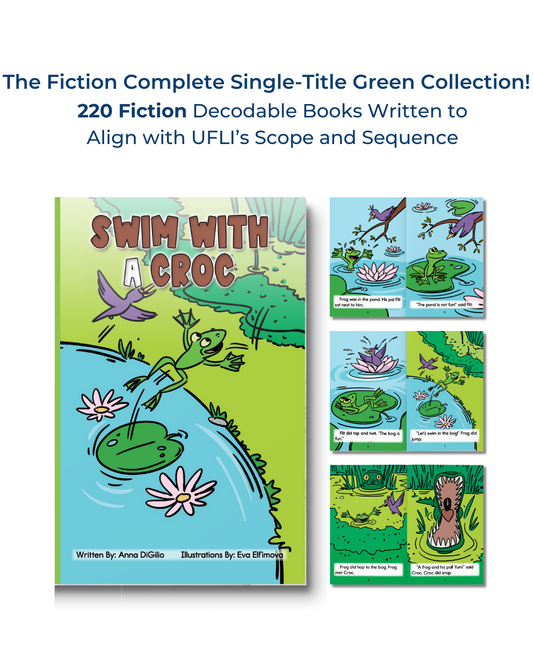
Developing Decoders Green Fiction Single- Title Collection (220 Books + 1 (6 pack Anthology))
Regular price $895.00 USDRegular priceUnit price per
Developing Decoders Orange Collection
Developing Decoders ORANGE (Syllable Types) Collection: 70 UFLI-Aligned Decodable Chapter Books
Unlock the joy of reading with our Developing Decoders Orange collection, an expertly crafted series of 70 decodable books designed to align perfectly with UFLI's scope and sequence. Featured on the UFLI decodable text guide, this comprehensive collection includes a total of 420 books that make learning to read an exciting adventure for young learners.
-
Developing Decoders ORANGE Collection: 70 UFLI-Aligned Decodable Books
Regular price $1,575.00 USDRegular priceUnit price per
Developing Decoders Yellow Collection
Developing Decoders YELLOW Collection: 164 Decodable Books Unlock the joy of reading with our Developing Decoders YELLOW collection, an expertly crafted series of 164 decodable books, with 6 copies of each title. This comprehensive collection includes a total of 984 books that make learning to read an exciting adventure for young learners.
-
Developing Decoders Whole Yellow Collection: Levels K - 3 (164 titles, with 6 copies each)
Regular price $3,690.00 USDRegular priceUnit price per -
Developing Decoders YELLOW Collection: Level K (20 titles, with 6 copies each)
Regular price $450.00 USDRegular priceUnit price per -
Developing Decoders YELLOW Collection: Level 1 (48 titles, with 6 copies each)
Regular price $1,080.00 USDRegular priceUnit price per -
Developing Decoders YELLOW Collection: Level 2 (48 titles, with 6 copies each)
Regular price $1,080.00 USDRegular priceUnit price per -
Developing Decoders YELLOW Collection: Level 3 (48 titles, with 6 copies each)
Regular price $1,080.00 USDRegular priceUnit price per
Developing Decoders All Access Plan
Our Developing Decoders All Access Plan brings you a full library of decodable books available digitally and in printable format. Each line of our collections have been written to align with a specific scope and sequence.
Structured Literacy with E.A.S.E
Structured Literacy with E.A.S.E (2nd Edition) is a research-based tier one foundational reading program that was created based on both the Science of Reading and the Simple View of Reading. It addresses all the strands of Scarborough’s Reading Rope.
This program will help teachers in many ways. First, teachers will be able to confidently implement practices that align with the research behind how the brain learns to read. Additionally, teachers will learn to support children so they can learn the English code with less effort and stress. Finally, the program provides differentiated activities and tier two supports in an easy-to-follow roadmap so teachers can help each child in the classroom learn to read.
-
Structured Literacy with E.A.S.E. K-2 Reading Program
Regular price $1,443.00 USDRegular priceUnit price per$1,443.00 USDSale price $1,443.00 USD
Decodable Books (Gray Set)
This Gray Set of Decodable Books follow a different scope and sequence than our Green and Orange Collections.
Please refer to the scope & sequence within the product to see the progression of skills in this collection.
-
Decodable Readers Classroom Collection (Gray Set) (180 titles, with 6 copies of each)
Regular price $4,366.50 USDRegular priceUnit price per
Classroom Tools
-
SORing Into Sounds - Interactive Word Building Kit for Phonics Instruction (5-Pack)
Regular price $199.00 USDRegular priceUnit price per -
Sound Wall for Teachers with Articulation Images and Teaching Guide
Regular price $29.99 USDRegular priceUnit price per -
SORing Into Sounds - Interactive Word Building Kit for Phonics Instruction Classroom Set (25-Pack)
Regular price $895.00 USDRegular priceUnit price per -
[BUNDLE] Word Mapping - Map-Its Paddles (SET OF 5 Kits)
Regular price $212.50 USDRegular priceUnit price per$250.00 USDSale price $212.50 USDSale -
[SINGLE] Word Mapping - Map-Its Paddles - 6 Paddles (1 Map-It Paddle Kit) *1 Kit has 6 paddles
Regular price $49.99 USDRegular priceUnit price per$59.99 USDSale price $49.99 USDSale

At Laprea Education, our mission is simple and deeply rooted in impact:
to get high-quality, structured literacy resources into the hands of more teachers and students, so every child has the opportunity to become a confident, capable reader.
Developing Decoders is a teacher-created series of decodable books grounded in research. Thoughtfully designed by classroom educators and Science of Reading specialists, these books reflect the realities of real classrooms. They feature:
- Engaging content aligned to clear phonics scopes and sequences
- Diverse characters and inclusive representation
- A wide range of fiction and nonfiction genres
We offer multiple collections of decodable texts, each written to align with a specific phonics scope and sequence.
Developing Decoders
The comprehensive phonics curriculum in Structured Literacy with E.A.S.E. uses phonological and phonemic strategies to help young readers explicitly and systematically decode words, a practice that the research has long supported as an effective tool for reading instruction.
Our goal is to provide students with the tools and strategies to decode and encode words that make up the English language so they can become skilled readers.
USE DECODABLE TEXTS TO PROVIDE OPPORTUNITIES FOR THE PRACTICE AND IMPROVEMENT OF DECODING SKILLS AT EARLY LEVELS. Research continues to support the use and benefits of decodable books in early reading instruction for young learners. (Castles et al., 2016).
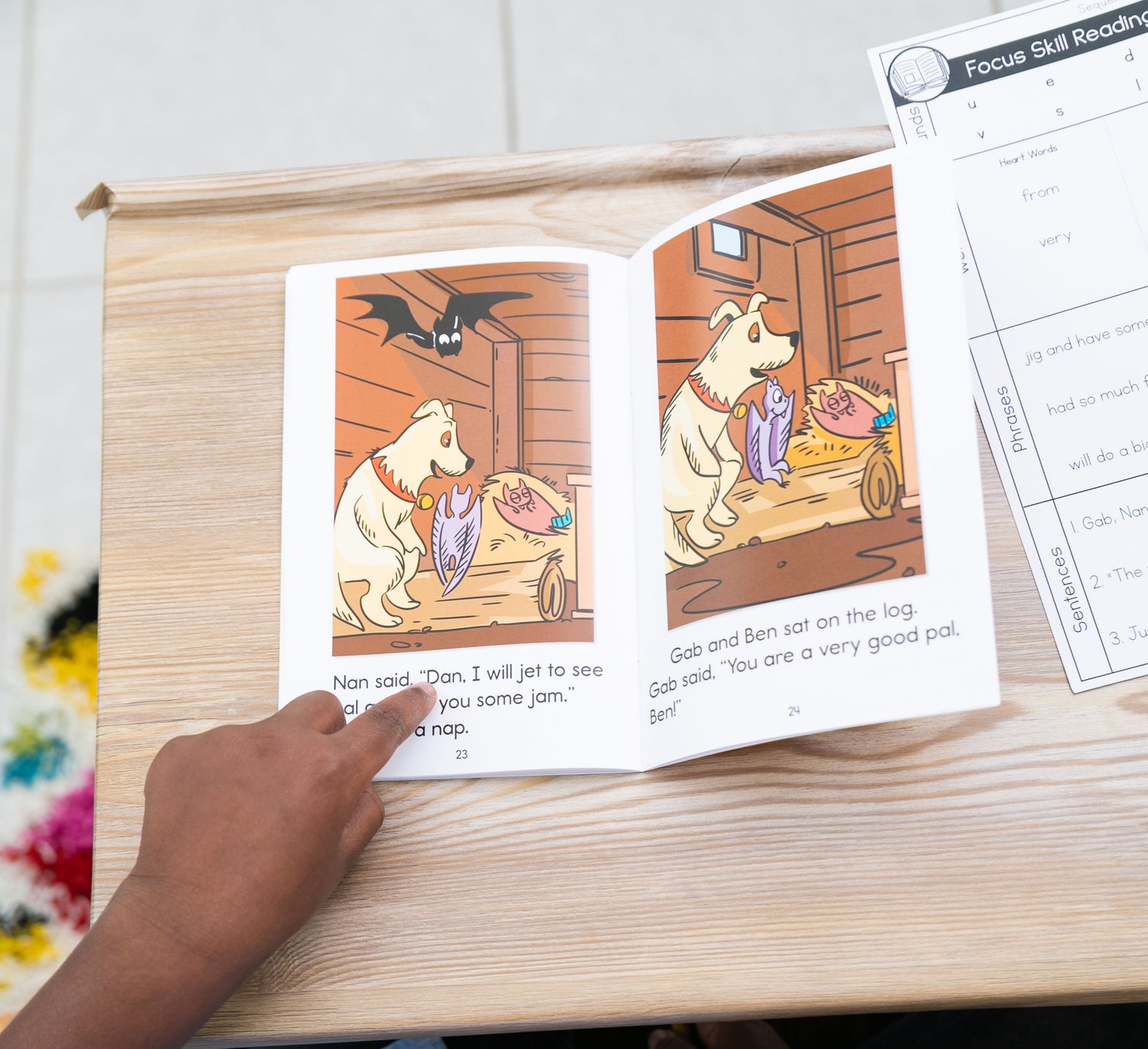
Decodable Texts
A study examining the effects of reading decodable texts among at-risk early readers in a tutoring program found significant improvements in decoding, word and passage reading, and comprehension when compared to a control group. First graders were randomly assigned to two intervention groups, differing by the level of decoding, and a control group. The findings showed that while the intervention groups outperformed the control group, there was no difference in post-test scores between the two intervention groups. This suggests that the use of decodable texts positively contributes to reading development among children who may be struggling with reading (Jenkins et al., 2004).
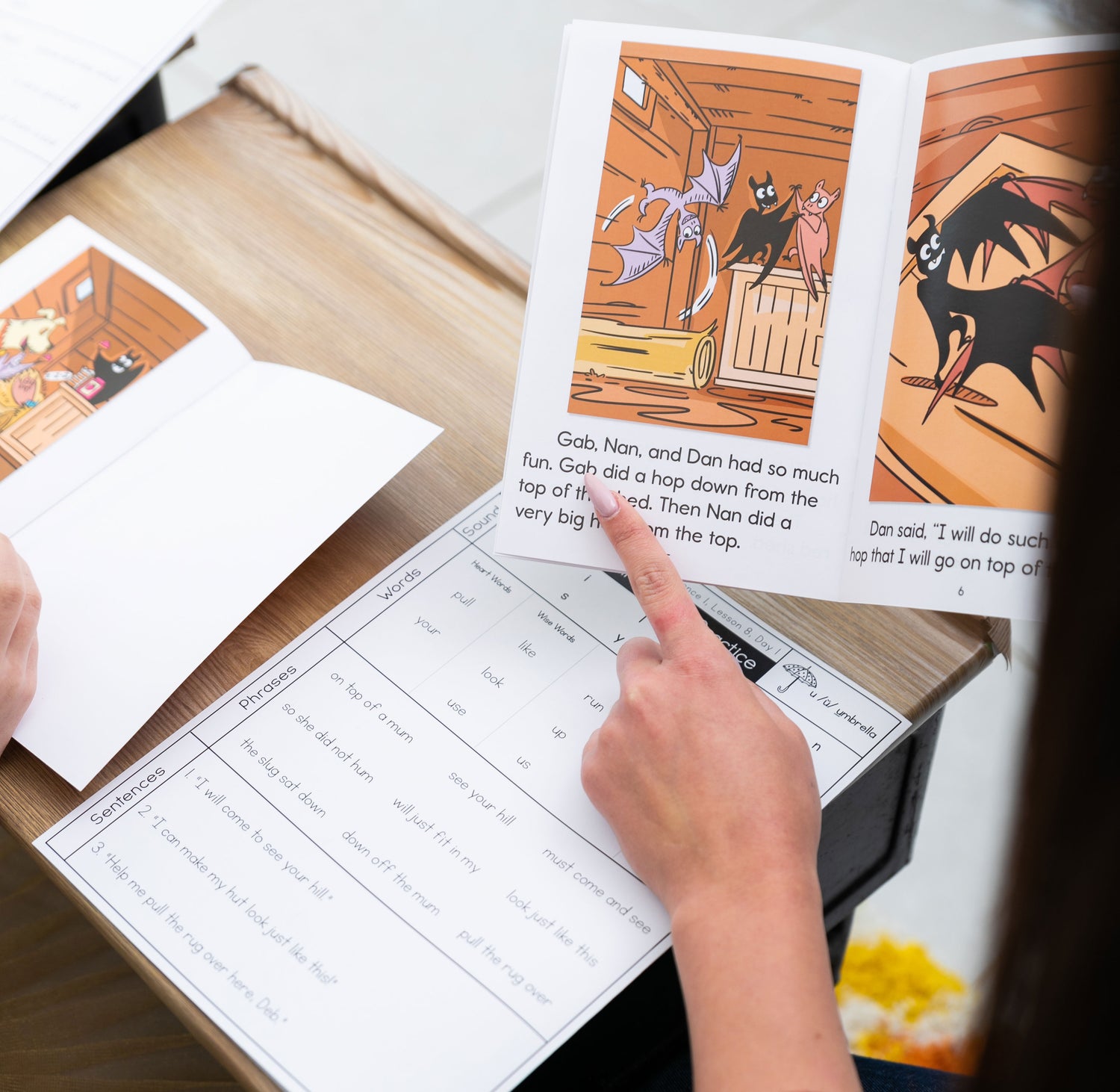
Price-Mohr and Mohr (2020) investigated the effects of phonically-decodable texts on young children learning to read. The young readers were randomly assigned to groups using either high or low proportions of phonically-decodable words. Both groups were introduced to new vocabulary through associated groups prior to reading the books. The findings revealed that the proportion of phonically decodable words made a difference in reading comprehension. Children in the intervention group using lower proportions of decodable words outperformed the group using higher proportions of decodable words on comprehension outcomes, supporting previous studies suggesting that as children become more skillful readers, decodable texts are less effective.

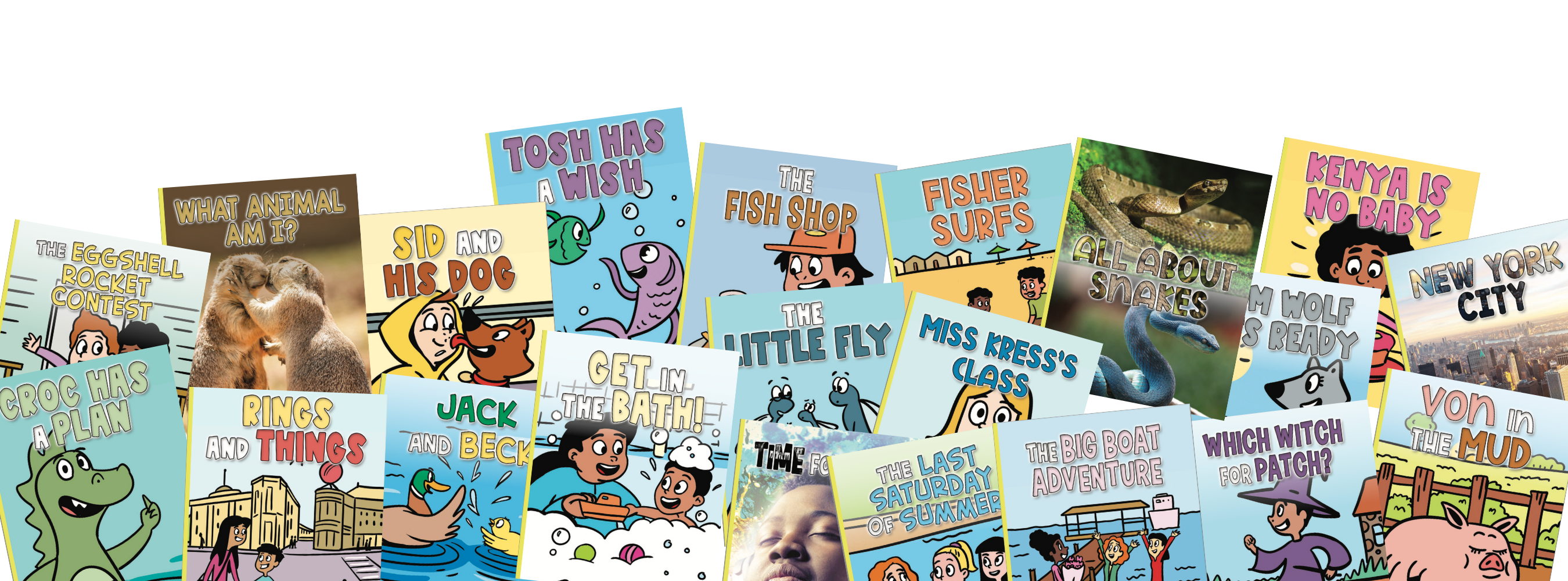
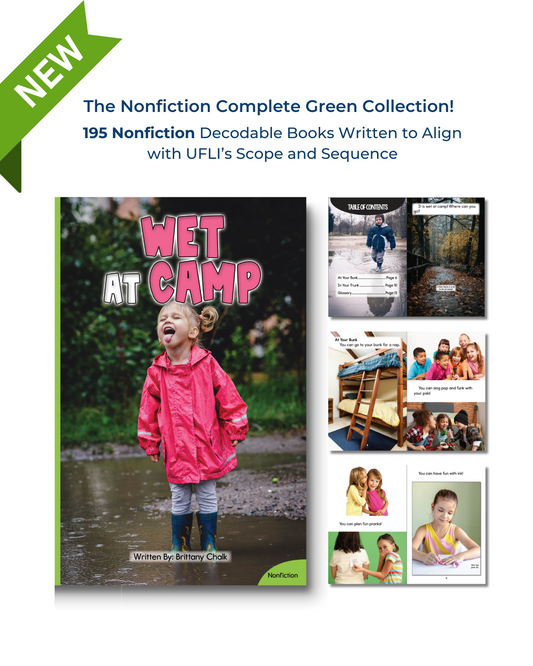
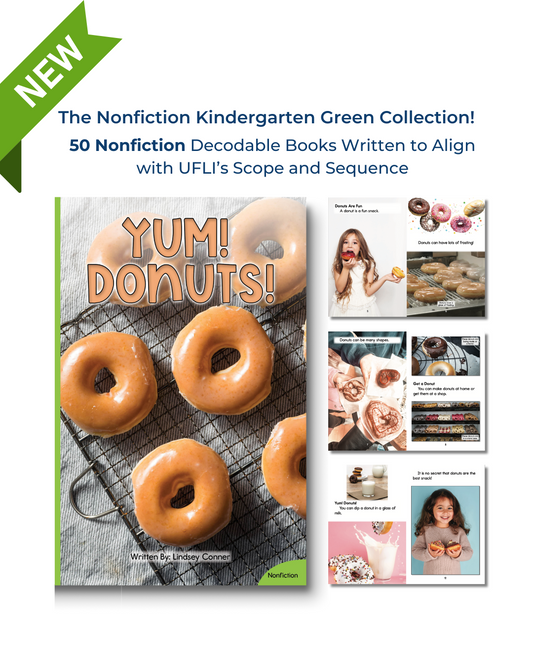

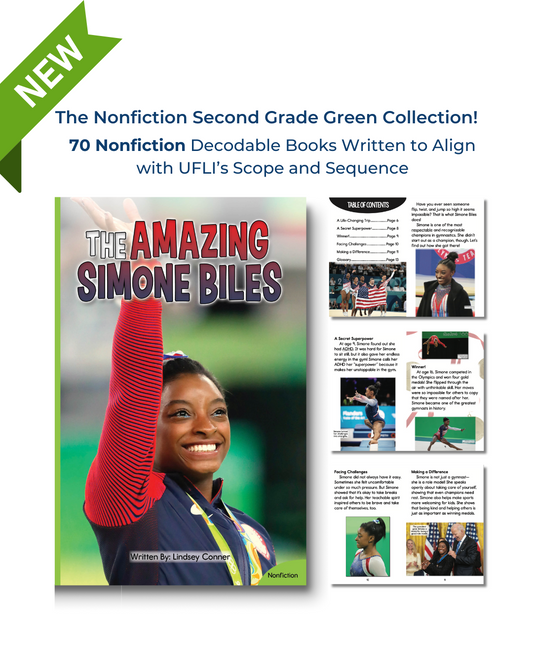
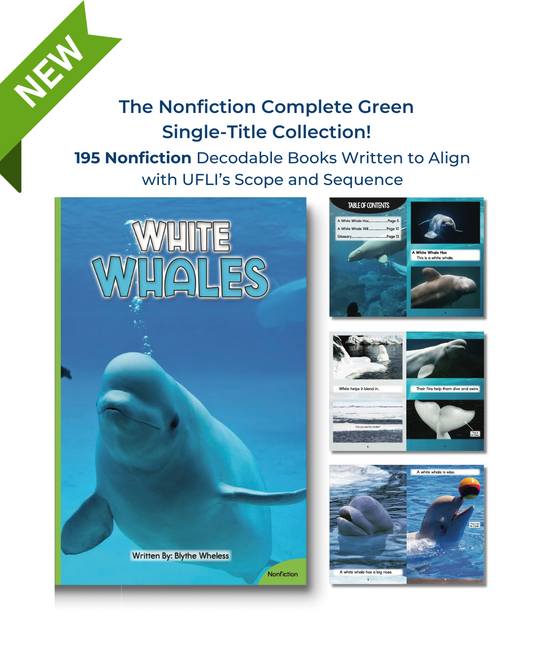
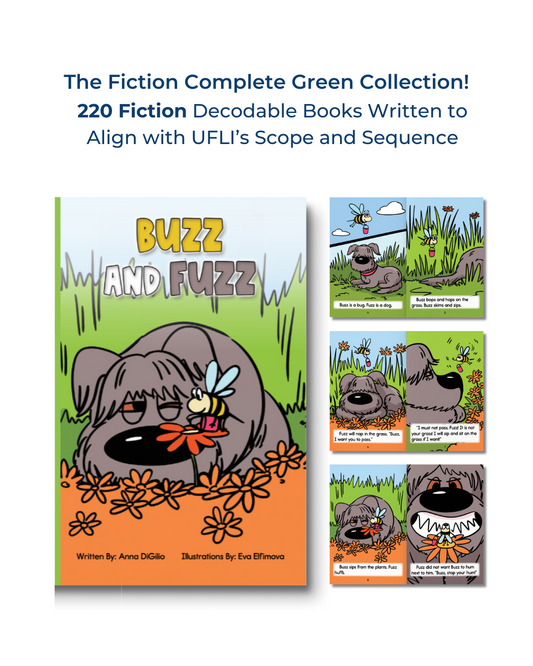
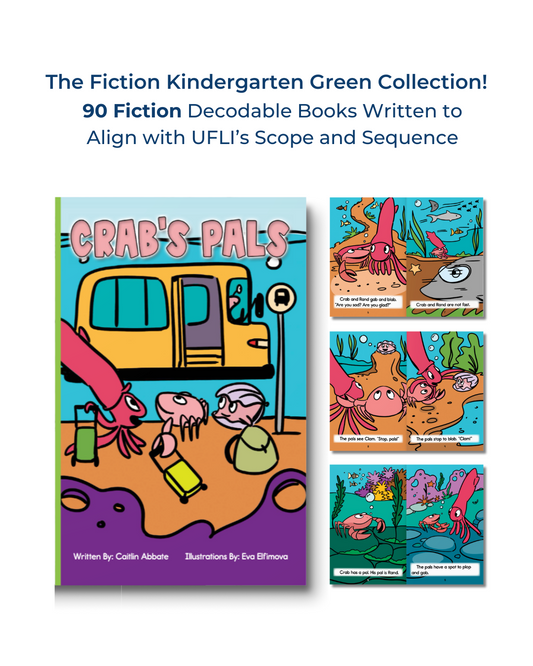
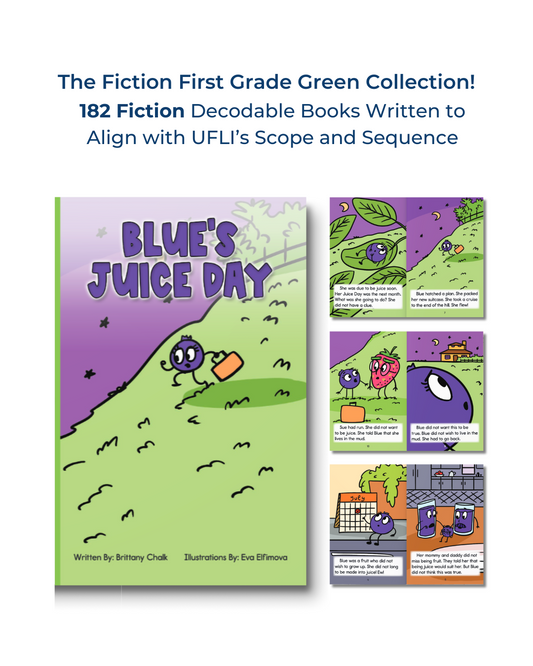
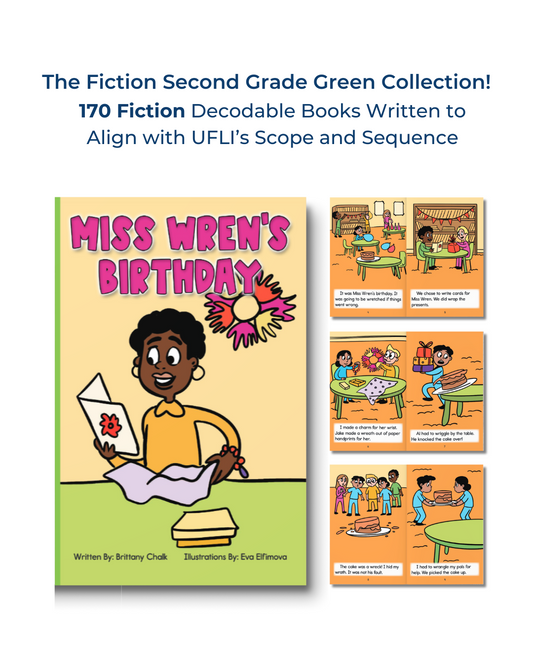

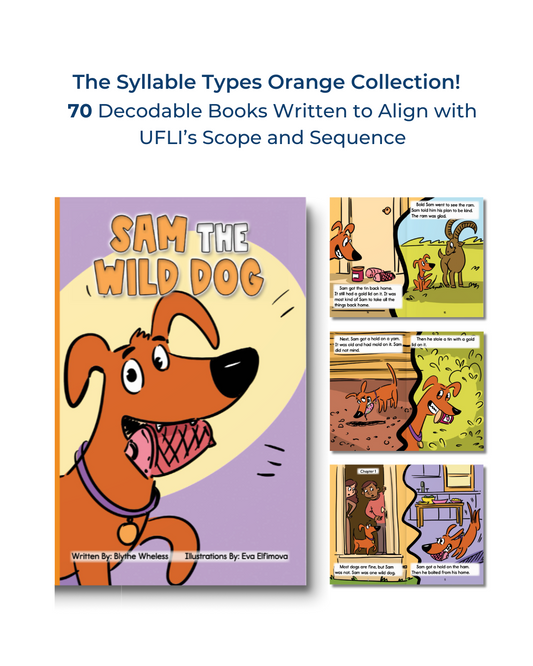
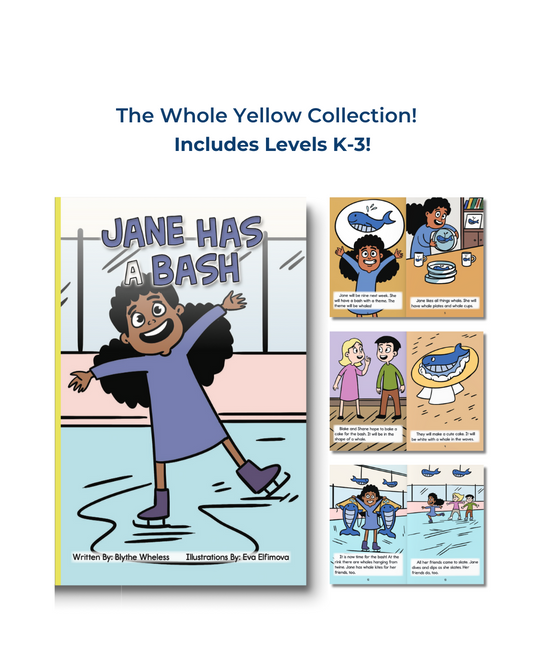
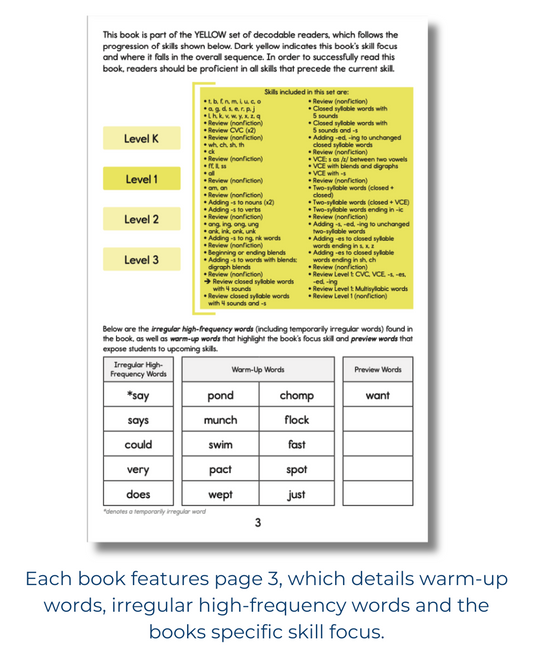
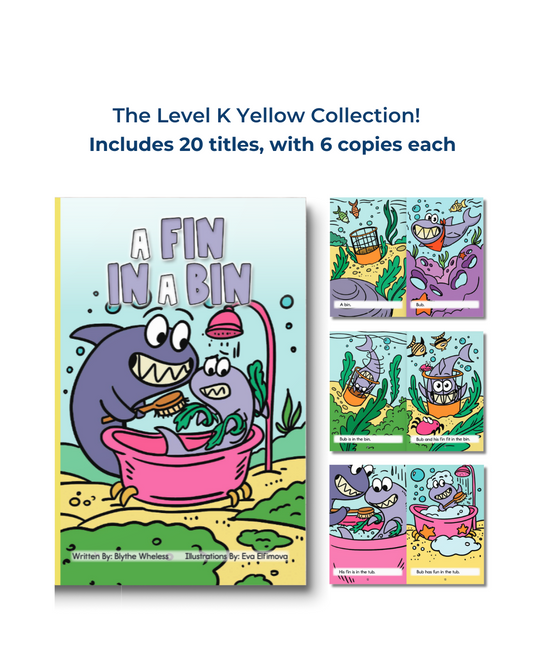

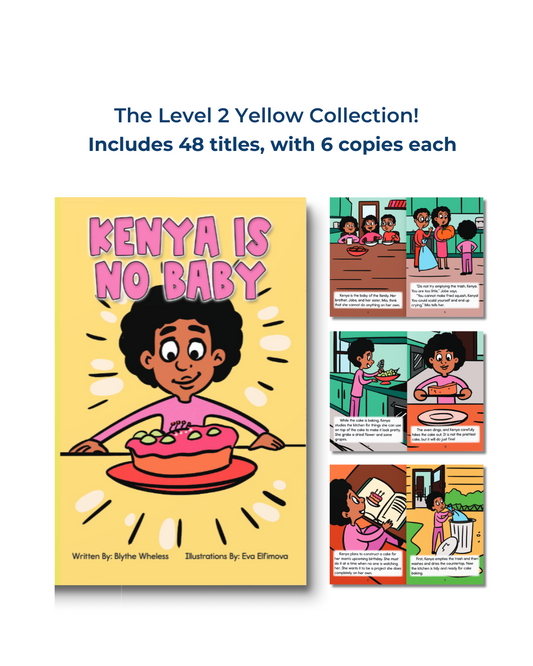
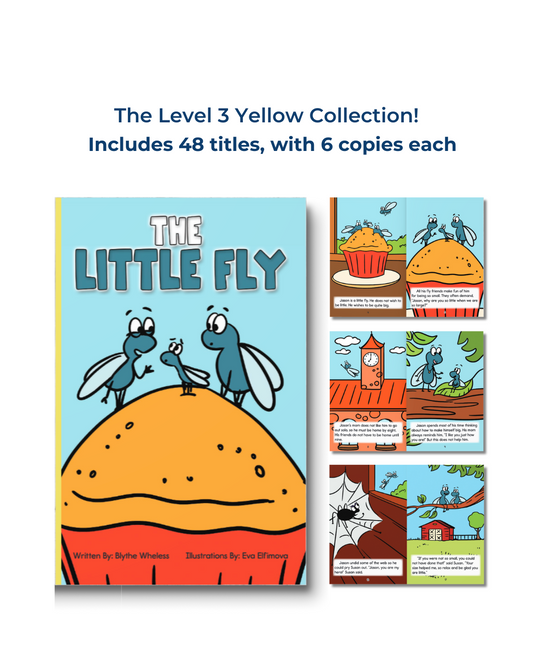
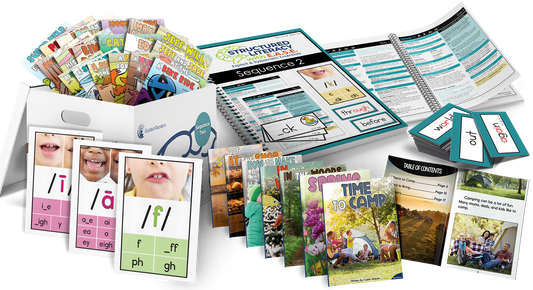
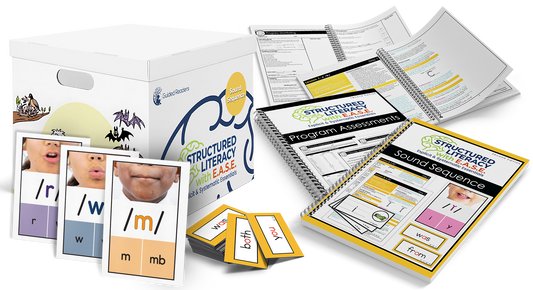
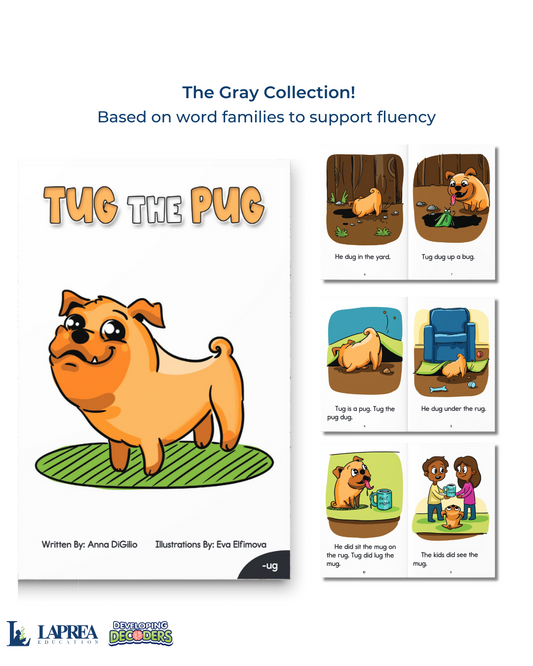
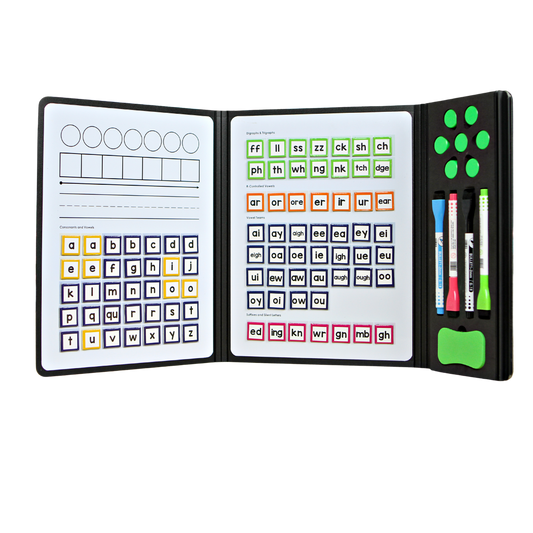
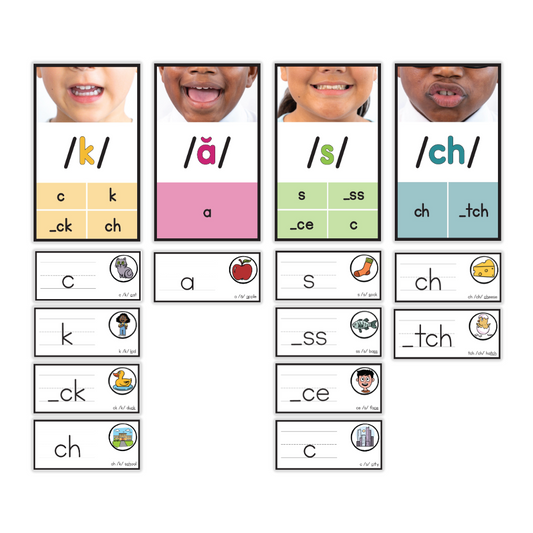
![[BUNDLE] Word Mapping - Map-Its Paddles (SET OF 5 Kits)](http://www.developingdecoders.com/cdn/shop/files/map-it-paddles-1.jpg?v=1695765966&width=533)
![[SINGLE] Word Mapping - Map-Its Paddles - 6 Paddles (1 Map-It Paddle Kit) *1 Kit has 6 paddles](http://www.developingdecoders.com/cdn/shop/files/map-it-paddles-1_c0499d94-4531-4b30-afd1-f0d639f36804.jpg?v=1748017474&width=533)